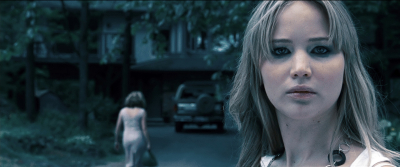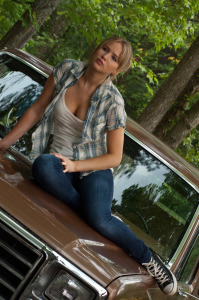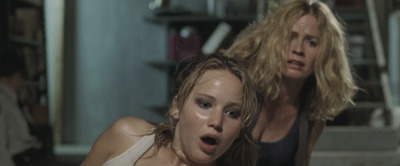By: debbie lynn elias

Who doesn’t love a good mystery or a good thriller? Even better, who doesn’t love to watch and wonder about what’s going on in the house next door or down the street in your quiet suburban neighborhood? Is that lovely couple with 6 kids running around really as simple as they seem or are they FBI or CIA staking out the neighborhood, performing undercover surveillance on the house two doors down with the guy under house arrest whofs jack-hammering up the sidewalks and stripping the interior of his home to bare wood beams with only a toilet in the middle of the room? There’s noise inside, a car in the driveway but only a single light comes on at the oddest hours. Shadows lurk in the midnight hours. And what about that house over there? Burned to its foundation, in 45 years, one of its residents has yet to be located, yet there was no body recovered in the ash. What about that family? That house? Secrets, mysteries and no one and nothing is who or what they appear to be. We have all watched and wondered at some point in our lives. And now, thanks to a script by David Loucka and the storytelling skills of melding visuals, performance and script by director Mark Tonderai , we get to be flies on the wall and actually satisfy our own voyeuristic tendencies with the taut and gripping Hitchcockian psychological thriller, HOUSE AT THE END OF THE STREET.
Elissa and her mom Sarah are the new kids on the block. Having just gone through a trying, and apparently, nasty divorce, Sarah is high strung and bitter. Down on life and men and having to start over, the one constant that Sarah clings to with a stranglehold is her daughter Elissa with whom she has never had a particularly close relationship. Free-spirited, self-reliant and independent, Elissa is your typical high school teen wanting to cut the apron strings, hang with her friends and find herself.
Their new home is in a quiet upscale sequestered suburban Pennsylvania neighborhood. A heavily wooded national park is their backyard. Given the economic status of the neighborhood, even Elissa has to wonder how they could afford renting this place. The answer comes at a “Welcome to the Neighborhood” BBQ when the realtor inadvertently lets slip an important little fact about Sarah and Elissa’s new home – the closest neighboring house across a strip a forest has a checkered past. Seems that the young daughter took a hammer and bludgeoned her parents to death in their sleep. And she has never been seen since, believed to have drowned in the rushing current of a rocky river nearby. But therefs another part of the story that the realtor still fails to disclose. There was a son – Ryan. Staying with a relative out of town, he survived the heinous attack and is now owner – and resident – in the HOUSE AT THE END OF THE STREET, something that a stranded Elissa discovers when tentatively accepting a ride from Ryan during a raging thunderstorm.

Polite, kind and gentle, Ryan doesn’t seem to be the “monster-kin” that the community makes him out to be. In fact, seeing Ryan so ostracized and tormented, only makes Elissa gravitate closer to him, as if he’s a wounded animal needing love and protection. On the flip side, we have Sarah who, on seeing her daughter happy and with this young man, is infuriated and enraged, seeming to want Elissa all for herself and to control every aspect of her life, while seething with her own jealousy and resentment. And while Elissa and Ryan grow closer and spend more and more time together at the HOUSE AT THE END OF THE STREET, Sarah clings ever tighter, driving a deeper wedge in the mother-daughter relationship. But does Sarah’s motherly over-protectiveness sense more than what meets the eye? Is something not right about the HOUSE AT THE END OF THE STREET and Ryan?

Cast after Tonderai saw her performance in “Winter’s Bone” (but before the Oscar push began) and long before “The Hunger Games” film phenomena, Jennifer Lawrence was his first choice for Elissa. “I knew it was her.” Bringing her own strong-willed personality to the performance, not to mention “an ability to look through you”, Lawrence is a natural in the role. She is as equally believable as a rebellious teenage daughter as a young girl falling in love for the first time. Notable with Lawrence, however, is the expressiveness of her eyes. She speaks volumes during silence and in several instances, tells the story of an entire scene with one look. The one caveat though is that one must push the image of “The Hunger Games” Katniss from the mind. As Elissa, Lawrence is fearful and has trepidation about the woods and things that go bump in the night – a much different trait than that we best know her for in “The Hunger Games.” I, for one, initially garnered a little smirk of disbelief when I saw her jump in fear in the forest as this is not what Katniss would do. So you must forget about Lawrence as Katniss to really appreciate her work in HATES.
But the shining star in this film is Max Thieriot. This is his film to lose as it’s his performance on which the film rises and falls. Capitalizing on his own look of cherubic innocence, as Ryan, Thieriot walks a razor-thin line of duality with the magic of an invisibility cloak, never revealing what lies beneath the surface until the perfect moment when he slams it home with a perfect storm of calm fury, sending the audience reeling into “WTF just happened!!” open-mouthed surprise. Brilliant performance! For director Tonderai, HATES is “a love story” and being such, “I needed the audience to fall in love with [Ryan]” and he knew he needed a very special actor in order to create a very fractured, fragile and tender relationship between Ryan and Elissa. And fall in love with this charming boy next door Ryan – and Elissa – is exactly what you will do thanks to Thieriot.

Elisabeth Shue is perfection as the annoyingly over-protective demanding – and often unlikeable – mother, Sarah. She is the mother that as a teen none of us wants but in the end, are awfully glad we do.
Written by David Loucka based on a story by Jonathan Mostow, HATES is a strongly constructed story, filled with twists and turns that are genuinely surprising, unpredictable and yes, even shocking. Enhancing the basic story and script structure is the work of director Mark Tonderai. Drawing on his own familial relationship with his parents and his17 brothers and sisters, Tonderai freely admits that the HOUSE AT THE END OF THE STREET is “about a parent’s love and how a parent’s love can help us or hinder us becoming the person that we are.” Selecting his films based on their themes, HATES spoke to Tonderai as he had just learned that he was going to be a father when he took on the project as an open directing assignment.

Celebratory with HATES is its unpredictability which will have you rooting for the villain one moment, the victims the next, back to the villain and thanks to the Hitchcockian intricacies will keep you thinking and on your toes, ever wondering what lies ahead.
With everything about the film feeding into the narrative, Tonderai calls on the talents of acclaimed Polish cinematographer Miroslaw Baszak to help create a visual tonal bandwidth that sets the stage for true terror. Constant and cohesive, the visuals are seamlessly integrated with the story and performances. Designing all of the lighting to be “motivated” and controlled by Baszak and Tonderai, they knew that “light sources were always something that was going to be in the shot” as integral parts of the composite picture. Slick, polished visuals gleam like glass, metaphorically shadowing potential moments when the veneers of characters shatter into terror. Beautiful is the inky black of night and thickly wooded areas juxtapositioned against the vibrant saturated colors of the past and present and then countered with sickly yellow palettes of hidden horrors in Ryan’s house. Slowly removing color from the overall palette until the final scene, we are met with a metaphoric grayscale that summarizes life – there is no black and white. Everything and everyone is shades of grey. Inventing the construct of HATES, when it comes to the camerawork, “everything is hand held. Even if it’s on a dolly or on a loose track, it’s all with a loose head. It removes the [sense] that this is a film. Itfs just slightly eofff.” Superbly constructed and executed.

What sets HATES apart from other similar genre films, is that “Anybody can put people in horrific situations. But I we can make the audience fall in love with them and then put them in horrific situations, itfs going to really hurt.” Here Tonderai, masterfully weaves story, imagery and performance rooted in the reality of a mother-daughter relationship and a first love relationship to achieve that love story and then layers in the horror of the history of the HOUSE AT TH END OF THE STREET. Avoiding the typical tropes of the genre by “pouring oil on the cliches and then take them all away”, what Tonderai tried to do is “play on your prejudices of what youfre expecting in the film…The idea is that you go into it and go, ’Oh yea, I’ve seen that before.’ But suddenly it goes right ahead of your expectations and suddenly it flips on you completely. Suddenly you’re in a different place. Suddenly you don’t know what’s going to happen.”
A perfect compliment to the film is scoring by Theo Green. So often with films of this genre, the music takes the lead and cues the audience as to what is coming, often spurring on a false anticipatory emotional reaction because “thatfs what the music is telling you to feel.” With HATES, Green’s music serves to buoy each scene with a subtlety that is never intrusive, never telling. The music takes its lead from the story itself. As part and parcel to the score, we are also treated to a vocal by Jennifer Lawrence who, in character, is a singer and joins a high school rock group. And let me say, Lawrence does have some pipes on her.
Terrifyingly chilling, you don’t want to miss the horrors hiding in the HOUSE AT THE END OF THE STREET.
Elissa – Jennifer Lawrence
Ryan – Max Thieriot
Sarah – Elisabeth Shue
Directed by Mark Tonderai. Written by David Loucka based on a story by Jonathan Mostow.











